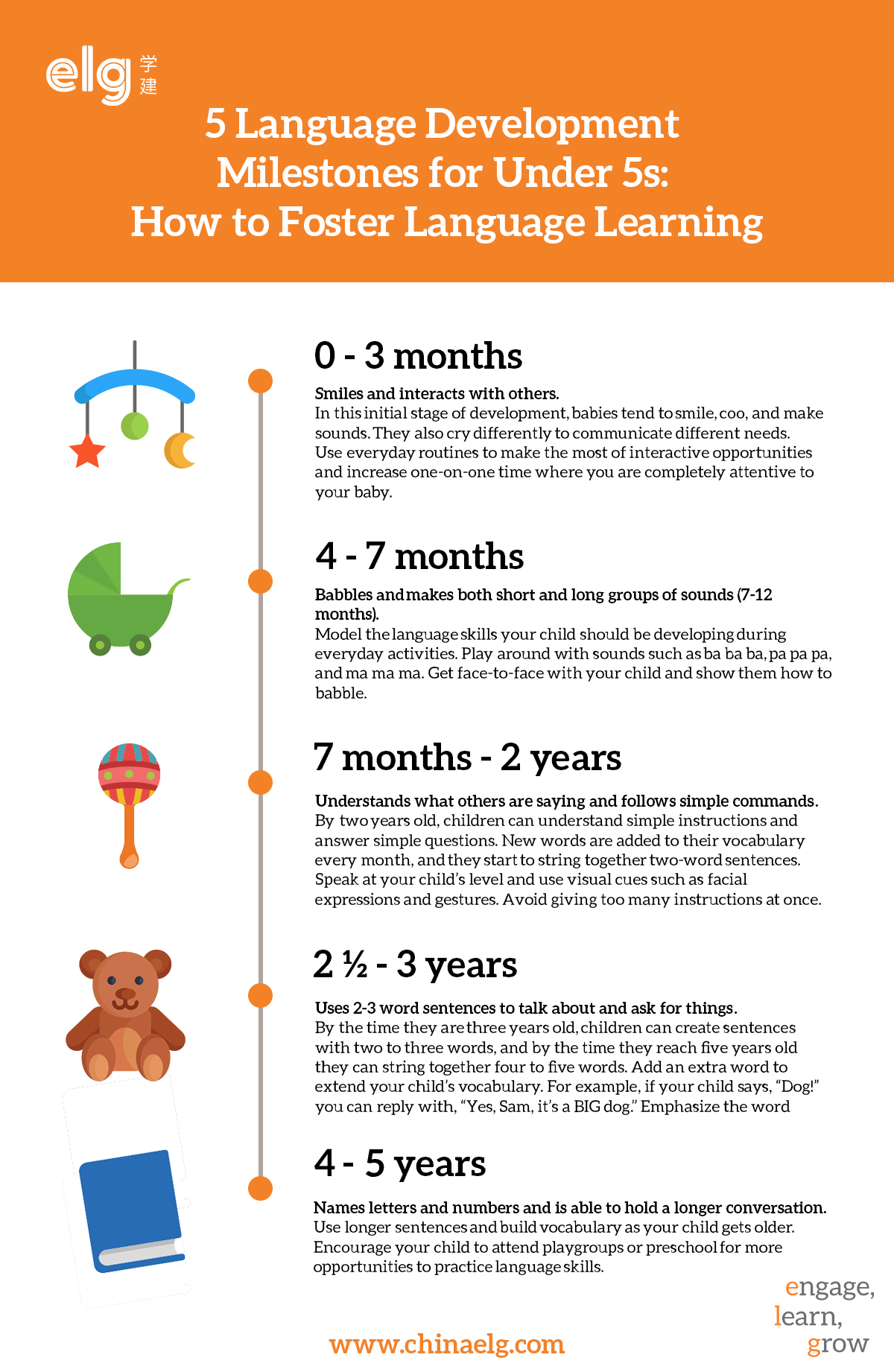Author: Benita Adolph, Speech-Language Pathologist
Children learn language from birth, so it’s helpful to recognize typical development milestones and signs of possible language disorders early on. Early detection of language disorders can help prevent future academic, social, and emotional challenges.
Remember that all children are different and develop in different ways. These milestones can help you gauge your child’s current stage, but try not to use them as a strict checklist. Here are five typical language development indicators and ways you can foster language learning at every age:

1. Smiles and interacts with others (birth–3 months).
In this initial stage of development, babies tend to smile, coo, and make sounds. They also cry differently to communicate different needs. Use everyday routines to make the most of interactive opportunities and increase one-on-one time where you are completely attentive to your baby.
2. Babbles (4–7 months) and makes both short and long groups of sounds (7-12 months).
Model the language skills your child should be developing during everyday activities. Play around with sounds such as ba ba ba, pa pa pa, and ma ma ma. Get face-to-face with your child and show them how to babble.
3. Understands what others are saying and follows simple commands (7 months–2 years).
By two years old, children can understand simple instructions and answer simple questions. New words are added to their vocabulary every month, and they start to string together two-word sentences.
Speak at your child’s level and use visual cues such as facial expressions and gestures. Avoid giving too many instructions at once. Instead of saying, “Get your bag, put your shoes on, and get in the car,” give three separate instructions and wait for your child to finish each action.
4. Uses 2-3 word sentences to talk about and ask for things (2½–3 years).
By the time they are three years old, children can create sentences with two to three words, and by the time they reach five years old they can string together four to five words.
Add an extra word to extend your child’s vocabulary. For example, if your child says, “Dog!” you can reply with, “Yes, Sam, it’s a BIG dog.” Emphasize the word you’ve added, and don’t expect them to repeat it back to you.
5. Names letters and numbers and is able to hold a longer conversation (4-5 years).
Use longer sentences and build vocabulary as your child gets older. Encourage your child to attend playgroups or preschool for more opportunities to practice language skills.
For charts and more information about language development, visit the ASHA (American Speech-Language Hearing Association). If you are concerned about your child’s development, you can contact ELG by emailing us at [email protected], or calling us at 4006 129 423.
